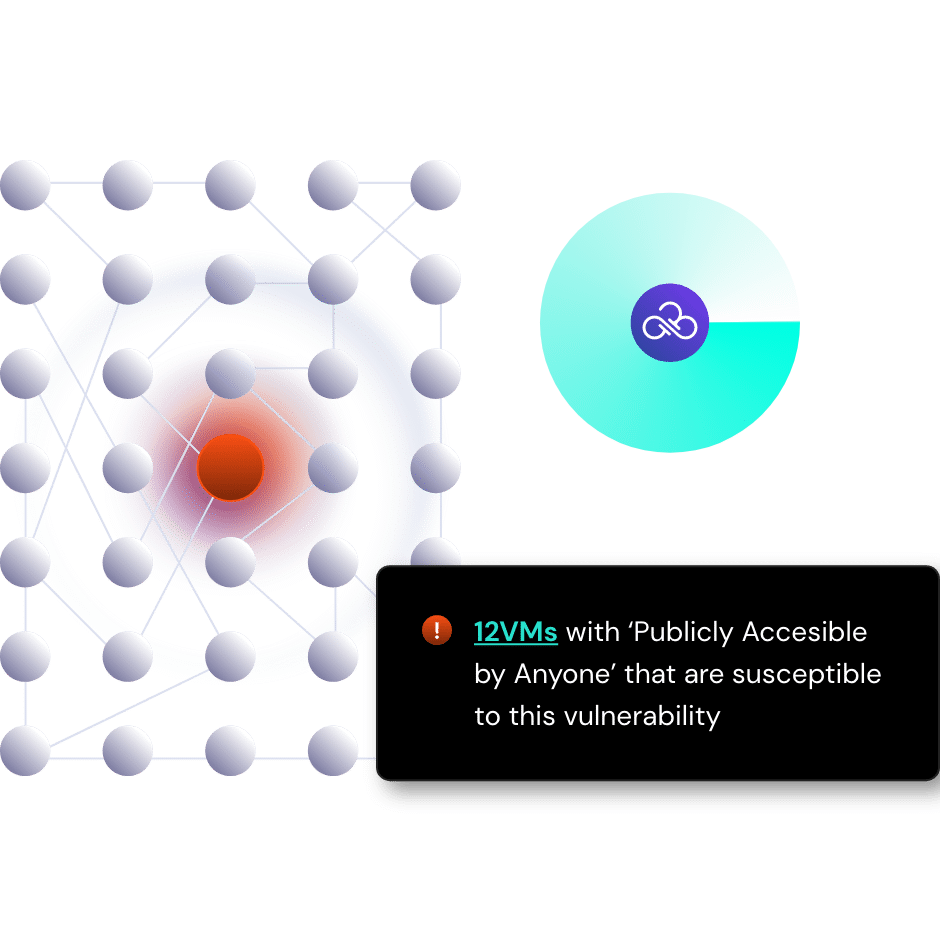Table of Contents

Share this entry

In the early days of risk detection, if your security team wanted an intimate understanding of their on-prem infrastructure and means to secure it, they needed to bring a tool into the environment — often, an agent. Today, agentless cloud security is increasingly viable with the widespread adoption of the cloud.
In this post, we’ll look at agentless cloud security and how it compares with agent-based solutions for cloud vulnerability management, to help you decide what’s best for your business. Ultimately, both have their use cases and pros and cons.
What is an agent?

An agent is essentially a piece of software that is deployed onto a workload. It performs security-related needs like scanning, information gathering, or installing patches. A well-known example is an Endpoint Detection and Response (EDR) solution, in which agents installed on endpoints look for malicious activity and relay data to some remote mothership system.
Agent-based security limitations
Agents hold a lot of value for certain use cases, and many organizations utilize them today. However, they carry some limitations and can leave security gaps.

Agent-based solutions require installation onto every workload or asset in your environment. They work by scanning a host or gathering information about your environment and returning results. In the cloud, information gathering needs to be continuous to meet the ephemeral, but agents tend to only relay data on a periodic basis. Additionally, they may require frequent updates. This all takes a lot of manual effort and can burden IT teams, Ops, and development.
Each agent requires manual deployment, which raises security concerns, as human error becomes a factor. And if you don’t own the workload configuration or deployment needing to be monitored, ensuring agent deployments is challenging. Gartner notes the operational challenge that agent use for cloud-native workloads brings due to their ephemeral nature in their Emerging Technologies Security Report.
Not only is it burdensome to use agents, but it can be intrusive and disruptive. Agents can disrupt workloads and applications, and some customers may not want external software entering and accessing potentially sensitive property. You also can’t protect what you can’t see — agent-use is limited to workloads that you know of and are accessible. This can leave gaps. In sum there are friction, scalability, and blind spot concerns.
However, the cloud changed things forever. It is no longer impossible to get a clear picture of what workloads, computers, machines, and assets are in your cloud, this knowledge is inherent in the cloud. With the cloud, teams can get a full-picture of infrastructure just with the use of application programming interfaces (APIs.) A lot of information we relied on agents to gather, is now just accessible.
What is agentless cloud security?

Now that the door to information is opened in the cloud, a lot of use cases for agents are greatly diminished. Security teams can now get a full picture of infrastructure just with the use of APIs and never stepping foot into an environment.
Agentless solutions existed before widespread adoption of cloud environments, but the cloud has made them a lot more viable. We can understand everything in a cloud just by asking it questions, allowing you to model a customer’s environment without ever having entered it.
Agentless scans take snapshots of resources, instead of running on them. The agentless scan assesses the environment through API calls gathering metadata and runtime storage reaching workloads. The scan then returns data, interprets it with machine learning, builds an inventory, and then enables you to deduce risk across the cloud environment. Security teams can model risk and maturity at an extremely low friction level and apply security principles without having to deploy software into the environment.
What are the benefits of agentless cloud security?
Agentless cloud security removes the friction concerns of agent use. In simple terms, agentless scanning brings your data to the scanner, not the scanner to your data. It requires less maintenance, manual effort, and less invasion of the environment. Less intrusion means less workload or application disruption, as agents take up computing resources.
Increased coverage is another great benefit of agentless security. The practice better suits cloud needs like ephemeral workloads only running for moments at a time, or paused machines, agentless solutions continuously monitor these assets. Other benefits of agentless security controls are increased flexibility, a seamless and central interface, and cost savings.
Agentless Security For Vulnerability Management
Agentless cloud security solutions excel in vulnerability management and workload security.
Vulnerability management has changed with the migration to the cloud. A network perimeter no longer exists, and the speed and scale of workloads has increased dramatically. In tandem with vulnerability management, workload security emerged as a solution for securing applications and assets in the cloud.

Cloud Workload Protection Platforms (CWPP) are a leading market solution addressing vulnerability management and scanning. Gartner notes it as a workload-centric solution, meaning it is suitable for the unique protection needs of cloud workloads. A good CWPP should:
- Perform agentless scanning
- Offer consistency and uniform visibility
- Detect vulnerabilities unique to the host
- Integrate with third-party tools or scanners
- Offer comprehensive cloud context
- Prioritize according to context and threat sensitivity
A ‘Better Together’ Story
The rise of agentless cloud security is not to entirely replace the use of agents, and this isn’t a story of agent-based vs. agentless cloud security. Instead, these two approaches each have their own use cases and benefits, and when working together, offer your program the highest level of security.
Agentless vulnerability management has proven to be extremely effective in the cloud. An agentless cloud solution fills the gaps where agents fell short and also offers a lot of the same benefits of an agent solution.
Sonrai Dig is a workload security solution with agentless scanning, real-time threat detection, and insights on threats unique to the host. If you’re working with agent-based solutions, Dig integrates seamlessly with them, too. To learn more about Sonrai’s agentless workload security explore the solution.





